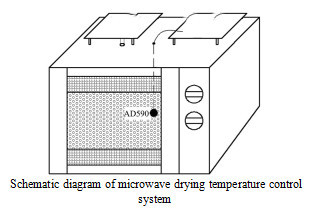Effect of Different Drying Methods on the Quality of Walnut Green Peel
Abstract: The dried walnut peels were dried by drying, dry, hot air drying, microwave drying and medium-short wave infrared drying. The moisture content, color difference, total phenolics, total flavonoids and terpenoids content of dried walnuts were studied by drying methods. The impact of time.

The results show that the drying time to constant weight, the shortest time of microwave drying equipment is 0.4 h, the drying rate is significantly higher than other drying methods (p < 0.05); the short-wave infrared drying is the second, the time is 8 h. The total content of total phenolics, total flavonoids and terpenoids in the dried skin was 46.98, 13.79 and 5.37 mg / g, which were significantly higher than other drying methods (p < 0.05). The walnut skin obtained by medium and short wave infrared drying was obtained. The contents of total phenol, total flavonoids and terpenes were 43.13, 12.23 and 4.36 mg / g, respectively. After 50 °C hot air drying, the walnut green skin powder has the lightest color, the ΔE* value is 65.05; the medium and short wave infrared drying is the second, and the ΔE* value is 67.98.
Comprehensive comparison of five drying methods, the quality of the products obtained by drying is the best, but it is greatly affected by the weather; in the rainy weather, there is no significant difference in the quality of the walnut skin after 50 °C hot air and medium-short wave infrared drying, but the medium-short wave infrared drying time It is only 1/3 of the hot air at 50 °C, which is more efficient and more suitable for the drying of walnut skin.
Key words: Walnut green skin microwave drying, total phenol, total flavonoids, terpenoids
China's walnut resources are abundant, and it has become a major walnut producing country in the world. The cultivated area of walnuts has reached more than 80 million mu, the total output has reached 3 million tons, and the output of walnut green skin is also 3 million tons. The processing and utilization of walnut fruit is mainly concentrated on walnut oil, walnut protein, walnut milk and other walnut products.
As a by-product of walnut production, walnut green skin has very low utilization rate. A large amount of green skin taken off after harvest is randomly stacked, which wastes resources. The sewage generated after the corruption seriously pollutes the environment. The allelochemicals contained in the walnut skin are inhibited by the sewage flowing to the farmland. The growth of other plants will also pollute the water source. It is necessary to collect the walnut green skin, dry and deep processing, reduce pollution and turn waste into treasure.
Walnut green skin contains various organic substances such as phenols, flavonoids, and terpenoids, and can be used to prepare cosmetics and medicines. Salejda et al. found that walnuts and some phenolic compounds in walnut peels can improve the sensory quality of sausages and prolong their shelf life. Wang Gangxia and other studies have found that polyphenols and terpenoids in walnut peel have obvious inhibitory effects on several major postharvest pathogenic fungi, and the inhibitory effect is positively correlated with its concentration.
Zhao Xingyu et al. found that polyphenolic compounds in the skin of Juglans mandshurica have protective effects on vascular endothelial cells damaged by endogenous H2O2. Ding Wei et al studied the dyeing properties of subcritical water extracts of walnut peels on cotton fabrics. It was found that after blending with metal salts such as Fe3 + , Cu2 + and Sn2 + , the dyeing effect of cotton fabrics was better and the range of chromatographic chromatograms could be extended. .
After harvesting, walnut peels should first be dried and preserved for later processing and utilization, but the drying of walnut peels has not been reported in the literature. This paper aims to investigate the effects of different drying methods such as drying, dryness, hot air drying, microwave drying and medium-short-wave infrared drying on the content of polyphenols, flavonoids, terpenoids and powder color in walnut peels, in order to dry walnut skin. Preservation and deep processing use provide the basis.